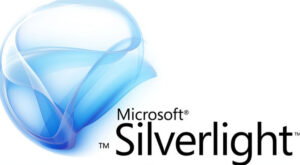
Visual Basic, a versatile and user-friendly programming language developed by Microsoft, has been a popular choice for building Windows applications for several decades. Visual Basic 6 (VB6) was a widely used version, but with the emergence of Visual Basic .NET (VB.NET), it became clear that a transition was necessary. In this article, we’ll explore the reasons why it’s time to move from Visual Basic 6 to Visual Basic .NET and the benefits of making the switch.
The Need for Transition
Visual Basic 6 served developers well for many years, but there are several compelling reasons to transition to Visual Basic .NET:
- Outdated Technology: VB6 was first released in the late 1990s, and its technology is now outdated. It lacks modern features and tools that can improve productivity and software quality.
- Security Concerns: VB6 applications often have security vulnerabilities due to their age and lack of security updates. Moving to VB.NET provides access to a more secure development environment.
- End of Support: Microsoft will ended support. This means that developers using VB6 will be on their own when it comes to resolving issues and staying up-to-date with modern technologies.
- Compatibility Issues: VB6 applications may not run properly on modern operating systems. Compatibility concerns can arise with newer Windows versions, leading to user frustration and compatibility challenges.
- Limited Platform Support: VB6 primarily targets the Windows platform, whereas VB.NET is more versatile and can be used to develop applications for various platforms, including mobile and web.
Benefits of Transitioning to Visual Basic .NET
- Modern Language Features: VB.NET is based on the .NET framework and offers modern language features, such as support for object-oriented programming, inheritance, and structured exception handling. This enhances code quality and maintainability.
- Enhanced Security: VB.NET applications benefit from improved security features, as the .NET framework includes built-in security mechanisms, reducing the risk of common vulnerabilities.
- Cross-Platform Development: VB.NET allows developers to create applications that can run on various platforms. With the .NET framework, you can build applications for Windows, macOS, and Linux.
- Rich Development Environment: Visual Studio, the primary integrated development environment for VB.NET, offers advanced tools for debugging, testing, and code analysis, streamlining the development process.
- Access to Modern Libraries: VB.NET provides access to a vast array of class libraries, making it easier to integrate third-party components and services into your applications.
- Strong Community Support: VB.NET has a large and active developer community. Finding resources, documentation, and support for VB.NET is much easier than for VB6.
Steps for Transition
Transitioning from VB6 to VB.NET can be a systematic process:
- Assessment: Evaluate your existing VB6 applications to determine their complexity and dependencies.
- Porting: Depending on the assessment, you can choose to rewrite the application in VB.NET or use tools to assist with the migration process.
- Training: Invest in training for your development team to familiarize them with VB.NET and the .NET framework.
- Testing: Rigorously test the migrated applications to ensure they function correctly and efficiently.
- Deployment: Deploy the VB.NET applications to your environment and monitor them closely for any issues that may arise.
Conclusion
The transition from Visual Basic 6 to Visual Basic .NET is not just a necessary step; it’s an opportunity to modernize your applications and take advantage of the many benefits offered by VB.NET and the .NET framework. While the process may require an initial investment of time and resources, it ultimately results in more secure, versatile, and maintainable applications, ensuring the long-term viability of your software solutions. It’s time to embrace the future of application development with Visual Basic .NET.



